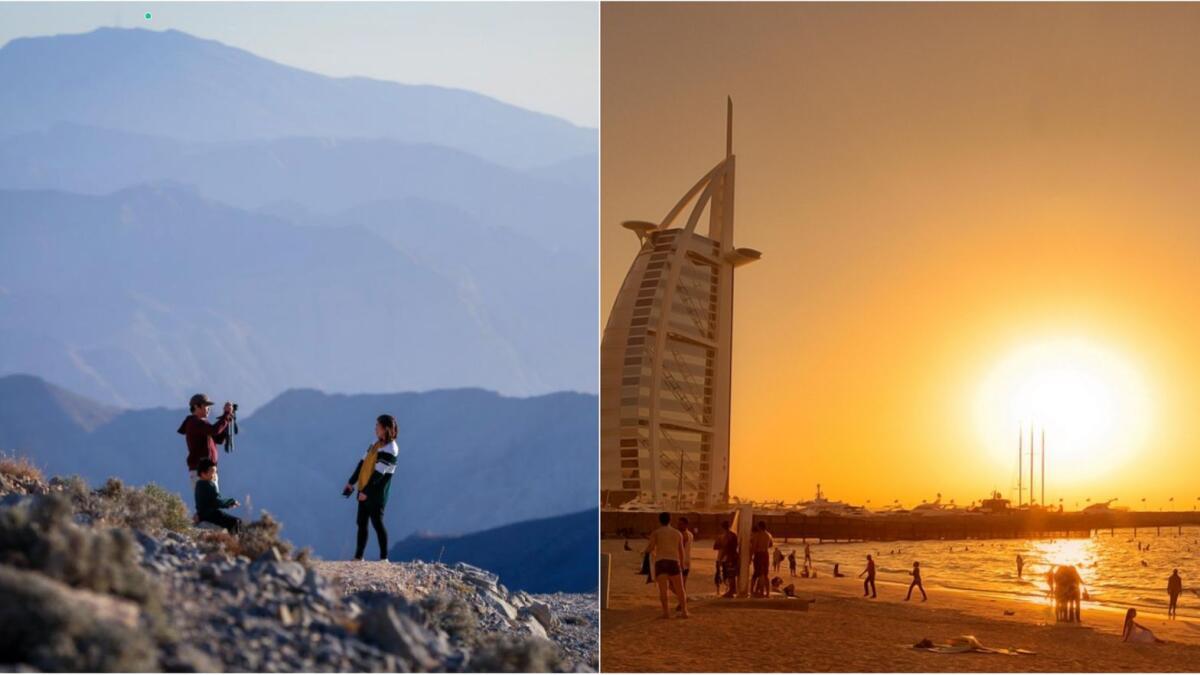
22°C To 50°C In UAE: Why Do Temperatures Vary Between Different Areas?
Last updated: Tue 2 Jul 2024, 10:14 PM
Even as temperatures in the UAE cross the 50°C-mark as summer peaks, there are certain areas that continue to record lows of 22°C. While areas like Al Dhafra have seen highs hovering around 50°C in the past few weeks, it's relatively cooler in Al Ain's Raknah.
According to an expert, Raknah continuing to record 22°C is due to unique characteristics that are different from other parts of the UAE.
Explaining the reasons for the disparity in temperature, Dr Ahmed Habib from the National Centre of Meteorology (NCM), in an interview with Khaleej Times on Tuesday said,“Raknah is a unique location. Approximately nine years ago, we organised some special studies and this revealed that its topography is distinctive. If you look at the map of Raknah and its stations, you will notice consistently lower temperatures.”
Stay up to date with the latest news. Follow KT on WhatsApp Channels.
During the winter months, particularly in January, Raknah experiences notably sub-zero temperatures, which often result in the formation of icicles and freezing water in the area.
Shining a spotlight on the reasons, he added,“Its special topography includes features like wadis, trees within these wadis, and dunes. As the air mass moves from higher to lower elevations, it cools down, causing a temperature drop. This particularly happens at night and early morning. The sand here is also somewhat different. All these factors together contribute to the unique temperature of Raknah, making it a special place due to its diverse topography.”
How will north-westerly winds effect region?Meanwhile, he also highlighted that beginning today and continuing into Wednesday, the country will be under the effect of north-westerly winds.
“As a result, temperatures are not excessively high, with some locations recording maximum daytime temperatures of 46°C or 47°C.”
Habib also explained the temperature is influenced by the pressure system over the region and the associated air mass.
Shedding light on this, the veteran weatherman said,“The characteristics of an air mass depend on its origin. When the air mass comes from the desert, it is usually very dry and hot. If you are experiencing a north-westerly wind coming from the north, associated with high pressure, the air mass will be hot and humid.”
“On the other hand, if you are influenced by the Indian monsoon low coming from the East, the air mass will also be hot and humid, but it's worth nothing that this is from a different source. Therefore, the weather conditions largely depend on the direction from which the air mass originates,” he added.
ALSO READ:
-
Dubai summer: Free ice cream, juices, for workers, delivery riders as temperatures cross 50°C
-
UAE summer: Coolest outdoor spots to visit as temperature crosses 50°C
-
'Big relief': UAE worshippers thank govt after first shortened Friday prayers amid summer heat
-
UAE: Worried about cars catching fire amid summer heat? Experts share safety tips

Legal Disclaimer:
MENAFN provides the
information “as is” without warranty of any kind. We do not accept
any responsibility or liability for the accuracy, content, images,
videos, licenses, completeness, legality, or reliability of the information
contained in this article. If you have any complaints or copyright
issues related to this article, kindly contact the provider above.
Most popular stories
Market Research

- 0G Labs Launches Aristotle Mainnet With Largest Day-One Ecosystem For Decentralized AI
- Origin Summit Announces Wave 3: Animation Powerhouse Maggie Kang To Join Programming Lineup
- WBTC Strengthens Its Role As Multichain Standard For Bitcoin In Defi
- Stonehaven Circle Marks 13Th Anniversary With Hadrian Colwyn Leading Calvio Ailegacyx Innovation
- Solstice Announces Strategic Collaboration With Chainlink And Leading Custody And Venture Firms To Enhance Ecosystem Ahead Of USX Stablecoin Launch
- Easystaff Data Reveals 6.8× Growth In Payroll Use Of Stablecoins



















Comments
No comment